#bharal
Text

Bharal
By: John Markham
From: Living Mammals of the World
1969
39 notes
·
View notes
Text

Bharal Pseudois nayaur
Observed by fishingcatt, CC BY-NC-SA
26 notes
·
View notes
Text

Bharal | John Oates
0 notes
Text
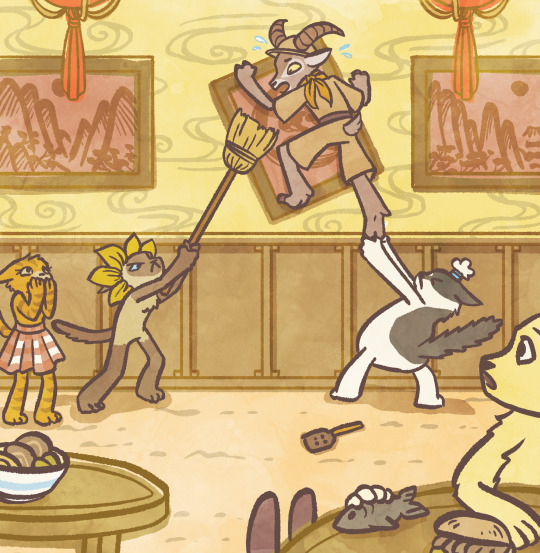

I got a new character who wants to climb the walls and I love him ;3; 💕
66 notes
·
View notes
Text
The [British] annexation of Kumaun and Garwhal [in the "Indian" Himalayas, after 1816] [...] not only heralded new systems of revenue, land ownership, and forestry but also gave rise to novel aesthetic forms of valuing "nature." [...] [S]portsmen like Colonel Fred Markham declared that [...] hunting musk deer [...] and blue sheep [...] in the Himalayas could not be rendered into prose as dramatically as tiger hunting in the plains. Thus, in the mountains colonial writers relied upon the aesthetics of the sublime [...]. [M]usk deer and bharal hunting on the slopes of the Gangotri glacier […] had become a "set-piece" in hunting journals […] by the middle of the nineteenth century. English travelers to the Himalayas considered themselves unique in their inclination to "wander through strange lands for the mere purpose of seeing the country [...]," a trait that was ostensibly beyond the comprehension of "natives". Colonial travelers acknowledged the hill dwellers' love of home but dismissed them for taking "little interest in scenery which threw us into raptures." [...]
The life and legend of Frederick Wilson (1816-83) [...] reflects the ways in which the "psychological sublime" as it unfolded in the Himalayas was tied to colonial constructions of racial difference. To metropolitan readers and gentlemen sportsmen, Wilson was a self-trained natural historian, a paternalistic employer of natives, and a connoisseur of the wild. [...] He was a guide to famed hunters such as Fred Markham and Robert Dunlop. [...] Wilson's writings reduced paharis from perceiving subjects into unseemly objects of dirt: "Like the inhabitants of most cold, mountainous, and half civilized countries, the Puharies are extremely dirty; dirty in their persons, in their clothes, their cooking, their dwellings, and, in fact, in everything." [...] Although historians have located the major break in systems of land use [in the British-controlled Himalayas] [...] in the advent of scientific forestry in the last quarter of the nineteenth century, [...] new forms of economic exploitation [and racialization, and environmental management philosophies, had already been present earlier] [...]. Wilson's pursuit of hunting as a profession was exceptional among nineteenth-century sportsmen in the subcontinent. To monopolize trade in Himalayan musk pods (the gland of the musk deer) and pheasant hides, he relied on [...] contracts with the subordinated princely ruler [...]. "Shikari Wilson-Hunter and Lumberer" exported bear grease, monal pheasant feather, taxidermied birds, and musk before extracting wood from the forests of the Bhagirathi Valley in the 1860s to furnish the expansion of imperial railway networks. [...] The success of his enterprises relied upon "native" labor and knowledge [...].
---
[Initially,] animals and forest produce [had] effectively remained common property. [But] [a]fter he obtained a contract for the animal trade at a nominal rent from the Tehri Raja Bhawani Shah, who ruled under the paramount authority of the [British] colonial state, Wilson proved able to exploit this [...]. His ability to monopolize the hide trade suggests how the context of colonial domination reshaped the ecology of Garhwal even before the advent of scientific forestry [a particular style of British forest management for the purpose of long-term profit from timber extraction, implemented in the later decades of the century]. Wilson relied upon [...] "lower" caste shikaris and bajgis trained as taxidermists, centralized "bird godowns" for the collection and processing of skins and hides, and a commission agent dispatching time-sensitive orders to distant markets. He managed to dominate the taxidermy trade [...] with the use of arsenical soap as a preservative. A single season could yield "upwards of 500 birds, principally pheasants and partridges," "scores of the deer tribe," enough bears to furnish "upwards of a hundred quart bottles of grease," and four leopards. Musk and monal were his chief products before he successfully petitioned the raja of Tehri for the lease of the Bhagirathi forests in 1858. [...]
---
Wilson dispatched [these animal products] [...] to the imperial metropole [London, etc.] and Himalayan hill stations [where British administrators lived] in unprecedented quantities. We might consider Wilson's role in expanding the trade in monal hides and feathers as an example. The monal pheasant was little known in Britain before the latter half of the eighteenth century, when it was first coveted by East India Company officials. Lady Impey, wife of the the chief justice of Bengal, first housed a monal in her extensive menagerie. The pheasant was subsequently named Lophophorus impeyanus in her honor. With the expansion of the monal trade, the high-ranking colonial official's fascination with this once rare and exotic emblem of oriental riches spread to the metropolitan public. Toward the latter half of the nineteenth century, monals were used to ornament women's bonnets and serve as ornithological specimens. Metropolitan ornithologists [...] singled out Wilson's taxidermied pheasants as objects of praises, creating a demand for them in the process. Over his thirty-year career, Wilson sent an average of fifteen hundred monal skins to Britain yearly. [...]
---
Wilson continued to curate the Himalayan sublime for European sportsmen well into the 1860s. [...] However, by the 1870s, the scale of Wilson's extractive enterprises in the Bhagirathi Valley was gaining notoriety. Writing in Hume's Stray Feathers, Edwin Brooks admonished the wreckage left behind by Wilson's logging operations, writing that "such wanton and wholesale destruction of the timber of a fine valley is not to be met anywhere else upon the face of the earth." Though Wilson defended himself against Brooks by arguing that the destruction of "grand old forests" was a "sad necessity," his lease over the Bhagarathi forests ultimately transferred to the Forest Department. While the advent of scientific forestry in the Central Himalayas heralded a new discourse about the management of nature [still in service of extraction and profit], the demarcation of racial difference remained central to the colonial imagination of Himalayan peoples and places.
---
All text above by: Nivedita Nath. "Imperial Hunting and the Sublime: Race, Caste, and Aesthetics in the Central Himalayas". Environmental History 26 (2021): 301-323. doi: 10.1093/envhis/emaa084. Published April 2021. [Bold emphasis and some paragraph breaks/contractions added by me. Italicized text within brackets added by me for clarity and context. Presented here for commentary, teaching, criticism purposes.]
13 notes
·
View notes
Text
i assigned the redacted demons animal horns
i like animals and this kind of thing fascinates me so here are the animals i think some of the redacted demons have the horns of
(pics and descriptions under cut, tw for goats bc some goats look creepy)
gavin-eland; they’re curled like scorpius’, which follows my theory that demons of similar nature have similarly shaped horns. also, they’re elegant and pretty.

scorpius-greater kudu; i based this off of what they looked like in his thumbnail tbh
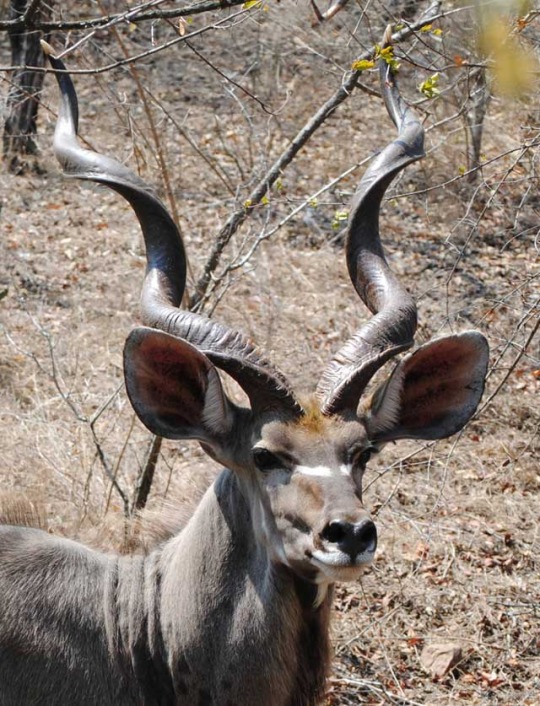
vega-springbok; like with scorpius, i based this off of appearance.

avior-anoa; i figure inchoate demons can have any variety of horns. that said, anoa horns are backwards-facing and simple. they’re practical, like avior is. so, anoa horns.
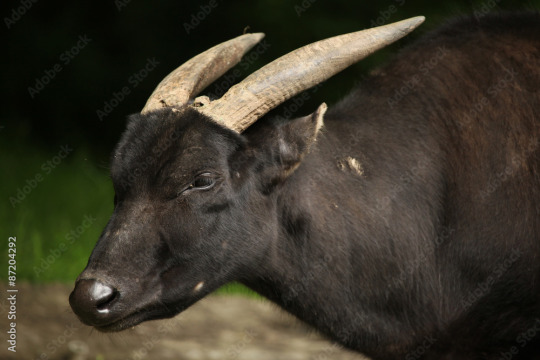
caelum-dall sheep; they’re very cute, and it seems that most of the fandom has agreed that caelum has the curled ram horns. dall sheep horns can get pretty big, but they’re small and adorable on young sheep.
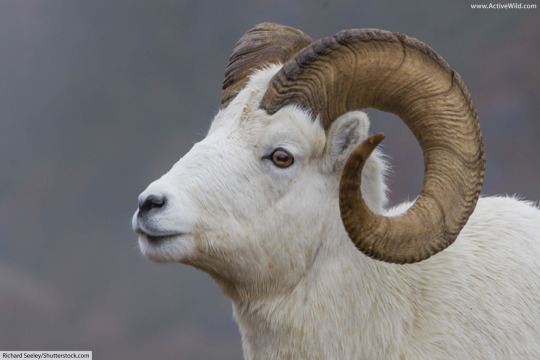
regulus-bharal; they’re still ram horns, but they somehow look more dangerous to me. they’re wider and jut out more in general.
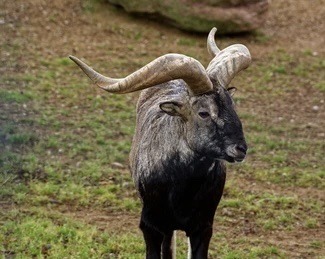
camelopardalis-tahr; they’re curved, but less so than caelum’s, which fits well with what i imagine works for daemons. idk, i felt like it fit. also, backwards-facing because cam is a lover, not a fighter.
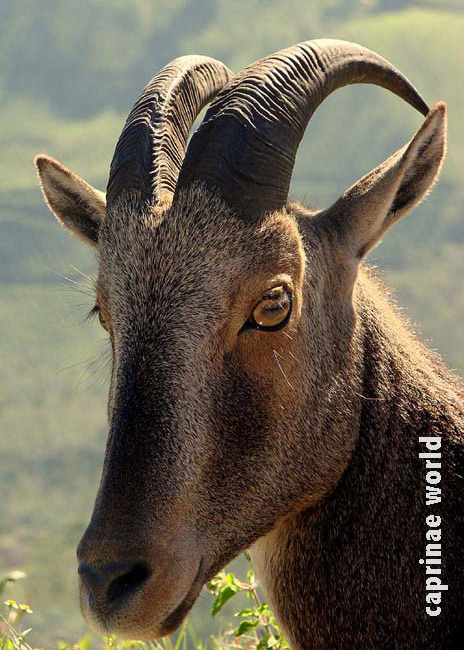
#redacted asmr#redacted audio#redacted demons#redacted scorpius#redacted gavin#redacted vega#redacted cam#redacted caelum#redacted avior#redacted regulus
112 notes
·
View notes
Text
The Valley of Flowers: A Blossoming Paradise in the Himalayas
Introduction
Nestled high in the Himalayas, the Valley of Flowers is a breathtakingly beautiful national park renowned for its diverse and vibrant flora. Located in the Indian state of Uttarakhand, this UNESCO World Heritage Site offers a spectacular display of wildflowers and is surrounded by majestic peaks. The Valley of Flowers is not just a paradise for nature lovers but also holds significant cultural and spiritual value. This blog delves into the various facets of this enchanting valley, exploring its history, flora and fauna, best times to visit, and tips for travelers.
Historical and Cultural Significance
The Valley of Flowers was introduced to the world by British mountaineer Frank Smythe, who stumbled upon this floral wonderland in 1931 while returning from a successful expedition to Mt. Kamet. Smythe was so captivated by the beauty of the valley that he documented it extensively in his book "The Valley of Flowers." His writings brought global attention to this hidden gem, leading to its recognition as a UNESCO World Heritage Site in 2005.
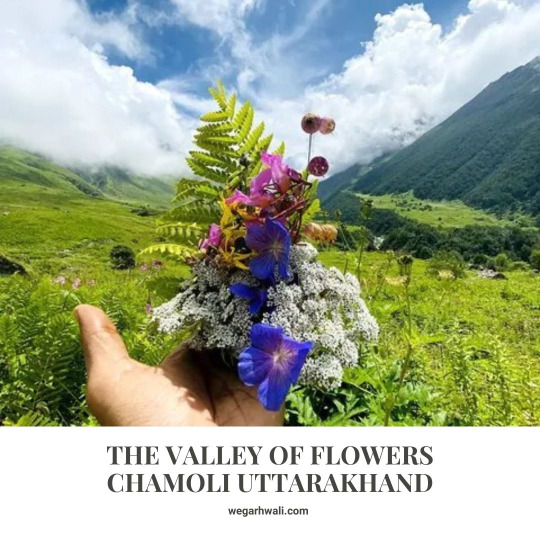
For the local communities, the Valley of Flowers holds deep spiritual significance. The valley is considered the abode of gods and goddesses in Hindu mythology, and it is believed to be the place from where Hanuman, the monkey god, collected the Sanjeevani herb to revive Lakshmana in the epic Ramayana.
Flora: A Kaleidoscope of Colors
The Valley of Flowers is renowned for its unparalleled variety of flora. During the monsoon season, from June to September, the valley transforms into a vibrant tapestry of colors with over 600 species of flowering plants in full bloom. Some of the most notable flowers include:
Blue Poppy (Meconopsis aculeata): The state flower of Uttarakhand, this delicate flower is a rare sight and a highlight of the valley.

Brahma Kamal (Saussurea obvallata): This sacred flower, associated with Lord Brahma, blooms at night and is considered highly auspicious.

Cobra Lily (Arisaema consanguineum): Known for its unique shape resembling a cobra's hood, this flower adds an exotic touch to the valley.

Primula (Primula denticulata): These colorful clusters of flowers are among the first to bloom in the valley.
Orchids and Anemones: Adding to the valley's charm are various species of orchids and anemones, creating a diverse floral mosaic.
The valley's flora also includes several medicinal plants used in traditional Ayurvedic practices, contributing to the local knowledge of herbal remedies.
Fauna: Wildlife in the Valley
While the flora steals the show, the Valley of Flowers is also home to a variety of fauna. The valley provides a habitat for several endangered and rare species. Some of the notable wildlife includes:
Snow Leopard (Panthera uncia): This elusive and endangered big cat is one of the most sought-after sightings in the valley.
Himalayan Black Bear (Ursus thibetanus): These bears are often seen foraging in the valley.
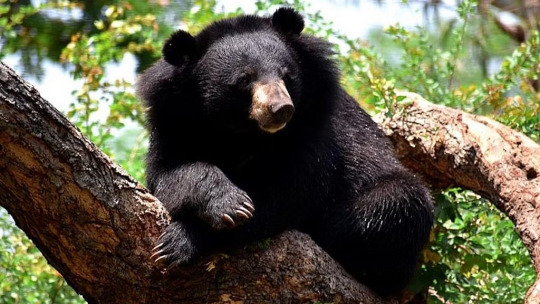
Musk Deer (Moschus chrysogaster): Known for its musk gland, this small deer species is endangered due to poaching.
Blue Sheep (Pseudois nayaur): Also known as bharal, these sheep are commonly seen grazing on the high slopes.
Birds: The valley is a birdwatcher's paradise with species like the Himalayan Monal, Snow Partridge, and various high-altitude raptors.
Best Time to Visit
The best time to visit the Valley of Flowers is during the monsoon season, from mid-July to mid-September. During this period, the valley is in full bloom, offering visitors a mesmerizing spectacle of flowers. The weather is also relatively mild, making it ideal for trekking and exploring the valley.
Trekking to the Valley of Flowers
The journey to the Valley of Flowers is as enchanting as the destination itself. The trek starts from Govindghat, a small town located on the banks of the Alaknanda River. Here is a detailed itinerary for the trek:
Day 1: Govindghat to Ghangaria (14 km)
The trek begins with a gradual ascent from Govindghat to Ghangaria, covering a distance of 14 kilometers. The trail passes through lush green forests, alongside the Pushpawati River, and offers stunning views of the surrounding mountains. Ghangaria, located at an altitude of 3,050 meters, serves as the base camp for the Valley of Flowers and Hemkund Sahib trek.
Day 2: Ghangaria to Valley of Flowers (4 km one way)
From Ghangaria, a 4-kilometer trek leads to the Valley of Flowers. The trail is well-marked and gradually ascends through dense forests, crossing several streams. As you approach the valley, the sight of blooming flowers and the fragrance in the air create an unforgettable experience. Spend the day exploring the valley, capturing its beauty through photographs, and enjoying the serene ambiance.
Day 3: Ghangaria to Hemkund Sahib (6 km one way)
For those with more time and energy, a trek to Hemkund Sahib, a revered Sikh shrine, is highly recommended. The trail to Hemkund Sahib is steeper and more challenging, but the reward is worth the effort. Hemkund Sahib, situated at an altitude of 4,329 meters, is a glacial lake surrounded by seven snow-capped peaks. The pristine lake and the Gurudwara (Sikh temple) offer a serene and spiritual experience.
Day 4: Return to Govindghat
After exploring the Valley of Flowers and Hemkund Sahib, trek back to Govindghat. The return journey offers another opportunity to soak in the beauty of the region and reflect on the magical experiences.
Tips for Travelers
To make the most of your visit to the Valley of Flowers, here are some essential tips:
Acclimatization: The high altitude can pose a challenge for some visitors. Spend a day at Ghangaria to acclimatize before heading to the valley.
Permits: Obtain the necessary permits from the forest department office in Ghangaria. The valley is a protected area, and entry is regulated.
Gear: Pack light but carry essential trekking gear, including sturdy hiking boots, rain gear, warm clothing, and a first aid kit.
Guides: Hiring a local guide can enhance your experience as they can provide valuable insights into the flora, fauna, and history of the valley.
Respect Nature: Follow the principles of Leave No Trace. Do not pluck flowers, litter, or disturb the wildlife.
Weather: Be prepared for sudden weather changes. Carry extra layers and waterproof gear.
Hydration and Nutrition: Carry enough water and energy snacks. There are limited facilities in Ghangaria and none in the valley.
Fitness: Ensure you are physically fit for the trek. Regular cardio and strength training can help prepare for the journey.
Conclusion
The Valley of Flowers is a natural wonder that captivates the hearts of all who visit. Its stunning beauty, rich biodiversity, and spiritual significance make it a must-visit destination for trekkers, botanists, and nature enthusiasts. Whether you are seeking adventure, peace, or a connection with nature, the Valley of Flowers offers an experience that will stay with you forever. So, pack your bags, lace up your boots, and embark on a journey to this floral paradise in the Himalayas.
0 notes
Text
Wildlife of Ladakh Through the Lens: A Photography Adventure

In the heart of the rugged, high-altitude region of northern India lies a land of stark beauty and uncharted wilderness. Ladakh, often referred to as the "Land of High Passes," is a captivating destination that offers a unique blend of breathtaking landscapes and a rich tapestry of wildlife. This remote area, characterized by its towering mountains, deep valleys, and vast deserts, is not only a haven for adventure seekers but also a paradise for nature lovers and photographers. Wildlife of Ladakh and Photography in Ladakh are two intertwined themes that present an unparalleled opportunity to explore and capture the essence of this extraordinary region.
Ladakh’s diverse ecosystem is home to a variety of wildlife species that have adapted to the harsh climatic conditions. One of the most iconic inhabitants is the elusive snow leopard, a creature that has captured the imagination of many. These magnificent big cats are perfectly adapted to the rocky terrain and frigid temperatures, making them a rare and prized sight for wildlife enthusiasts and photographers alike. The high-altitude deserts and rugged mountains provide the perfect backdrop for capturing these predators in their natural habitat.

In addition to snow leopards, Ladakh boasts a wealth of other wildlife species. The Tibetan antelope, or chiru, is another remarkable resident. Known for their grace and speed, these antelopes are often seen grazing on the sparse vegetation of the region. Similarly, the Himalayan blue sheep, or bharal, can be spotted on the steep slopes, their blue-grey coats blending seamlessly with the rocky surroundings. Photographers will find ample opportunities to capture these animals in action, from grazing herds to playful lambs.
Bird enthusiasts will be delighted by the avian diversity in Ladakh. The region is home to several species of birds of prey, including the golden eagle and the lammergeier, or bearded vulture. These majestic birds can often be seen soaring high above the valleys, their keen eyes scanning the terrain for prey. The sight of a golden eagle in flight, set against the dramatic backdrop of the snow-capped peaks, is a photographer’s dream. Additionally, the tranquil waters of Ladakh’s high-altitude lakes attract migratory birds such as the black-necked crane, bar-headed goose, and ruddy shelduck, offering further opportunities for stunning wildlife photography.
One of the most striking aspects of Ladakh is its ability to change with the seasons. Each season brings its own unique charm and photographic opportunities. In the summer, the landscape is bathed in warm hues, with the alpine meadows coming to life with vibrant wildflowers. This is an excellent time for capturing the contrast between the colorful flora and the arid surroundings. The winter months, on the other hand, cloak Ladakh in a blanket of snow, transforming it into a winter wonderland. This season offers a chance to photograph the region’s wildlife against a pristine white backdrop, as well as the hardy locals going about their daily lives in the extreme cold.

To truly experience and capture the essence of Wildlife of Ladakh and Photography in Ladakh, it’s essential to explore the region’s diverse landscapes. The Nubra Valley, known for its sand dunes and double-humped Bactrian camels, offers a unique desert landscape that contrasts sharply with the surrounding snow-capped peaks. Photographers can capture the striking juxtaposition of the camels against the backdrop of the towering mountains, creating images that highlight the diversity of Ladakh’s terrain.
The Changthang Plateau, located in the southeastern part of Ladakh, is another must-visit destination for wildlife photographers. This vast, high-altitude plateau is home to the nomadic Changpa people and their herds of pashmina goats. The goats, prized for their soft and warm wool, are often seen grazing on the sparse vegetation of the plateau. The area is also a haven for birdlife, with several high-altitude lakes attracting a variety of migratory birds. Photographers can capture the unique lifestyle of the Changpa people, as well as the stunning landscapes and wildlife that characterize this remote region.
For those looking to capture the majestic peaks and pristine lakes of Ladakh, the Pangong Tso and Tso Moriri lakes are not to be missed. These high-altitude lakes, with their crystal-clear waters reflecting the surrounding mountains, provide a serene and picturesque setting for photography. The changing colors of the lakes, from deep blue to shimmering turquoise, offer endless opportunities for capturing the beauty of Ladakh’s natural landscapes. Additionally, the shores of these lakes are home to several species of wildlife, including the kiang, or Tibetan wild ass, which can be seen grazing on the grassy plains.
Photographers visiting Ladakh should also take the time to explore the region’s rich cultural heritage. The ancient monasteries, with their intricate architecture and vibrant prayer flags, offer a glimpse into the spiritual life of the Ladakhi people. The Hemis Monastery, one of the largest and wealthiest monasteries in Ladakh, is particularly famous for its annual Hemis Festival, which features colorful masked dances and rituals. Capturing these cultural events and the daily lives of the monks can add a unique dimension to your Ladakh photography portfolio.

When planning a photography expedition to Ladakh, it’s important to be well-prepared for the challenges posed by the high-altitude environment. The thin air and extreme temperatures can be physically demanding, so acclimatization is key. Ensure that you have the necessary permits for restricted areas, as well as appropriate gear to protect your equipment from the harsh conditions. A sturdy tripod, wide-angle lenses, and telephoto lenses are essential for capturing the diverse landscapes and wildlife. Additionally, carrying spare batteries and memory cards is crucial, as the cold temperatures can drain battery life quickly.
Wildlife of Ladakh and Photography in Ladakh offers an unparalleled opportunity to explore and capture the untamed beauty of this extraordinary region. From the elusive snow leopard to the graceful Tibetan antelope, and from the soaring golden eagle to the serene high-altitude lakes, Ladakh is a photographer’s paradise. The ever-changing landscapes, diverse wildlife, and rich cultural heritage provide endless possibilities for creating stunning and memorable images. So pack your camera gear, embrace the adventure, and get ready to explore the wild and wonderful world of Ladakh.
0 notes
Text
Flora: A Floral Extravaganza
Flora: A Floral Extravaganza
The Valley of Flowers is famed for its diverse and colorful floral display, which reaches its peak during the monsoon season from July to early September. The valley transforms into a botanical wonderland, with over 500 species of flowering plants. Some of the most iconic flowers found here include:
Brahma Kamal (Saussurea obvallata): A rare and sacred flower in Hindu mythology, blooming at high altitudes.
Blue Poppy (Meconopsis aculeata): Known for its striking blue petals, this flower is a rare sight.
Cobra Lily (Arisaema): Named for its cobra-like appearance, this plant is unique to the region.
The valley's meadows are also adorned with a variety of other flowers, including marigolds, daisies, primulas, and anemones, creating a riot of colors that is truly mesmerizing.
Fauna: A Haven for Wildlife
The Valley of Flowers is not just about flora; it is also a sanctuary for several endangered and rare species of animals. The park provides a habitat for:
Asiatic Black Bear: Often spotted foraging in the forested areas.
Snow Leopard: An elusive and majestic predator.
Musk Deer: Known for its musk gland, highly valued in perfumery.
Red Fox: A common yet captivating sight in the park.
Blue Sheep (Bharal): Frequently seen on the higher slopes.
Bird enthusiasts can also delight in spotting species like the Himalayan monal pheasant, the state bird of Uttarakhand, and other avian fauna.
Trekking and Accessibility
Reaching the Valley of Flowers is an adventure in itself. The journey begins from Haridwar or Rishikesh, leading to the town of Govindghat. From here, a trek of about 14 kilometers brings visitors to Ghangaria, the base camp for the valley. The final leg of the trek from Ghangaria to the Valley of Flowers is approximately 3-4 kilometers. The trail is well-marked and offers stunning views of cascading waterfalls, dense forests, and snow-capped peaks.
The best time to visit is from mid-July to early September, when the flowers are in full bloom. During this period, the valley presents a kaleidoscope of colors, making it a photographer's paradise.
Cultural and Religious Significance
Close to the Valley of Flowers is Hemkund Sahib, a revered Sikh pilgrimage site. Situated at an altitude of about 4,633 meters, Hemkund Sahib is a high-altitude lake and a gurudwara (Sikh temple) that attracts thousands of pilgrims each year. The trek to Hemkund Sahib is a steep climb from Ghangaria but offers a spiritually uplifting experience and panoramic views of the surrounding peaks.
Conservation Efforts
The Valley of Flowers, along with Nanda Devi National Park, forms the Nanda Devi Biosphere Reserve. This designation by UNESCO underscores its significance as a site of exceptional natural beauty and biodiversity. Conservation efforts focus on preserving the unique flora and fauna, maintaining the ecological balance, and promoting sustainable tourism.
Travel Tips
Permits: Visitors must obtain permits from the forest department, available at the entry point in Ghangaria.
Accommodation: Basic accommodations are available in Ghangaria, including guesthouses and lodges.
Guides: Hiring a local guide is recommended to enhance the experience and gain deeper insights into the valley's unique ecosystem.
Preparation: Given the high altitude and challenging terrain, visitors should be physically prepared and carry essentials such as proper trekking gear, warm clothing, and sufficient supplies.
The Valley of Flowers is more than just a destination; it is a journey into a realm of natural wonder, tranquility, and spiritual serenity. Whether you are a nature enthusiast, a trekker, or someone seeking a peaceful retreat, the Valley of Flowers offers an unforgettable experience that leaves a lasting impression.
0 notes
Photo

Bharal Pseudois nayaur
Observed by dineshvalke, CC-BY-SA
0 notes
Text

Nestled majestically at an impressive elevation of 7,250 feet above sea level, Shimla, often hailed as the ‘Hills Queen,’ beckons travelers to discover its enchanting allure. Perched atop seven majestic hills, this prime tourist destination in Himachal Pradesh
Wrapped in the embrace of lush forests adorned with Pine, Deodar, Oak, and Rhododendron trees, Shimla unfolds a picturesque panorama that captivates the hearts of visitors worldwide.
For those eager to explore the top 5 places to visit in Shimla, our comprehensive guide is your key to unlocking a seamless and unforgettable journey. The iconic Mall Road stands as a must-visit, a bustling thoroughfare that encapsulates the essence of Shimla with its vibrant shops and lively activities. As your trusted companion on this adventure, we provide detailed insights into the optimal timing for your visit to the ‘Hills Queen,’ ensuring you experience the best of both Shimla and its surrounding areas.
1) CHRIST CHURCH
The Christ Church in Shimla, dating back to 1857, claims its position as the second oldest church in North India. Majestically positioned at the renowned Ridge in Shimla, this architectural marvel boasts a captivating neo-Gothic design that echoes an era long past.
With its soaring spires and ornate embellishments, it presents an irresistible canvas for capturing captivating social media content. The church’s neo-Gothic architecture harmonizes with the surrounding beauty of Shimla, offering a blend of history and aesthetics that resonates with both locals and visitors alike.
https://himalayantribe.co/wp-content/uploads/2024/06/1-4.webp
2) HATU PEAK NARKANDA
Perched majestically at an elevation of 11,152 feet, Hatu Peak stands as a sentinel of beauty, located 64 kilometers from the heart of Shimla. As winter’s embrace blankets the nearby areas, such as Narkanda, in pristine white, the journey becomes a true adventure. Only the sturdy 4×4 vehicles dare to navigate the snow-clad paths during this time.
Nestled at the pinnacle, Hatu Temple awaits, accessible by a rewarding 20-minute trek.Constructed in the distinct pagoda style, the magnificent Hatu Temple is adorned with intricate wooden carvings that trace stories of time and devotion.
https://himalayantribe.co/wp-content/uploads/2024/01/hatu-2834537_1280-600x810.webp
3) JAKHOO HILL
At an impressive elevation of 8,000 feet, Jakhoo Hill rises as the crowning glory of Shimla.Among the marvels atop Jakhoo Hill stands a towering tribute to devotion—a majestic 108-foot-tall statue of Hanuman, the embodiment of strength and faith. This awe-inspiring icon adds a spiritual dimension to the already captivating landscape.To reach this elevated sanctuary, one can embark on a scenic hike to Jakhoo Hill, where each step is a journey towards breathtaking beauty.
Alternatively, the Ropeway offers a unique experience, whisking you up the heights and unveiling a new perspective of the mountains. Whether you choose the path of the hiker or the allure of the Ropeway, Jakhoo Hill promises an experience that transcends the ordinary, where nature’s splendor and spiritual reverence converge.
4) Himalayan Nature Park Kufri
Situated approximately 18 km from Shimla and nestled at an altitude exceeding 2,600 meters, the Himalayan Nature Park sprawls across 90 hectares of temperate vegetation, forming a pristine habitat for diverse wildlife native to the Western Himalayas. On clear days, visitors are treated to awe-inspiring vistas of the snow-clad peaks of the Himalayas from within the park. Beyond its scenic allure, the park serves as an educational haven, housing select Himalayan animal species. The spacious enclosures ensure these animals, including leopard, brown bear, musk deer, bharal, Tibetan wolf, leopard cat, and various pheasants, can thrive in an environment close to their natural habitat.
5) VICEREGAL LODGE OR ADVANCED STUDIES
The Viceregal Lodge, now known as the Indian Institute of Advanced Study, stands as a cultural gem in Shimla. Majestic and grand, this Scottish architectural marvel remains unmatched in size and beauty since its construction during the vice-royalty of Lord Dufferin between 1884 and 1888. Initially serving as the Viceregal Lodge until India’s independence, it later became the Presidential palace before being entrusted to the Indian Government in 1965, under the Ministry of Education (Shiksha Mantralaya), which established the esteemed Indian Institute of Advanced Study within its walls. Today, select portions of the lodge are accessible to the public and tourists, offering a glimpse into its storied past and architectural splendor.
6) TANI JUBBAR LAKE
Tanni Jubbar Lake, nestled near Thanedhar close to Shimla, is a charming and secluded rainwater-fed lake surrounded by towering pine trees. Renowned for its serene beauty, it serves as a popular attraction near Shimla, offering an ideal spot for picnics and relaxation. The tranquil ambiance and picturesque surroundings make it a favorite among visitors seeking solace amidst nature.
Adding to its allure, the banks of Tanni Jubbar Lake are graced by a temple dedicated to Nag Devta, the serpent king, adding a touch of spirituality to its natural splendor. This combination of scenic beauty and cultural significance makes Tanni Jubbar Lake a must-visit destination for tourists exploring the Shimla region.
#himachal tour packages from chandigarh#himachal tour packages from delhi#top places to visit in shimla
0 notes
Text
https://uttarakhandtourism.gov.in/destination/gangotri-national-park
Explore one of the most pristine stretches of wilderness in the country, Gangotri National Park. Offering stunning and picturesque scenery filled with lush coniferous forests, magnificent meadows and majestic glaciers, the national park is a glimpse of heaven on earth. Home to one of the most popular trekking tracks, Gaumukh- Tapovan Trek, which will reconnect you with nature while amazing you with its treasured landscape. The gushing pearl-like water of the river Ganga paving its way from its glacial origins creates a spectacular image that will leave you in awe. Established in 1989, the Gangotri National Park is spread over an area of 1,553 sq kms scaling up to an altitude of 7,083 m. Its unique geographic location makes it rich in flora and fauna. Home to several endangered species like Bharal or blue sheep, black bear, brown bear, Himalayan Monal, Himalayan snowcock, Himalayan thar, musk deer, and snow leopard. A day with the vibrant wildlife of the national park will immerse you in a state of tranquility and peace away from the hustle-bustle of the your daily life.
#Gangotri National Park#Gangotri National Park uttarakhad#uttarakhand tourism#uttarakhand tourism development board#uttarakhand tourism guidelines
0 notes
Text
Name: Miss Chaz Harper
Color: Merlot #541e1b
Symbol: Air
Strife Specibus: staplerkind
Handle: apollosCricket
Animal: bharal
Pronouns: nis/nim/nir/nimself and he/him and yey/yem/yeir/yeirs/yemself and he/him and she/her
Age: 31
Birthday: November 27, which was a thursday.
Sexuality: nb4nb
Interests: dandyism and wikipedia editing
Dream Moon: dual dreamer
Classpect: Mage of Rage
Land: Land of Terror and Shards, a scary place, with unsightly Olive Ridley Sea Turtle consorts. It is a place full of swelling geography and twisting mazes. Themis has a choice for the player to make.
Instrument: xylorimba
0 notes
Text
Indian Bharal, also known as the Himalayan Blue Sheep, is a species of caprid found in the mountainous regions of the Indian subcontinent. Renowned for its distinctive physical features and adaptability to rugged terrains, the Bharal is an intriguing subject of study in wildlife biology.

0 notes
Text
Dayara Bugyal Trek: A Blissful Himalayan Expedition
Introduction
The Dayara Bugyal Trek is a captivating journey into the heart of the Garhwal Himalayas, renowned for its expansive meadows, dense forests, and stunning vistas. This trek is perfect for nature lovers seeking a rejuvenating experience away from the hustle and bustle of city life.
Starting Point
The trek typically commences from Haridwar, Uttarakhand, serving as the gateway to the Garhwal region. From Haridwar, trekkers embark on a scenic drive to the village of Barsu, the starting point of the Dayara Bugyal Trek.
Route and Highlights
Spanning approximately 9-10 kilometers, the trek winds through picturesque landscapes, including dense oak forests, charming hamlets, and the vast alpine meadows of Dayara Bugyal. The highlight of the trek is reaching the sprawling Bugyal (meadow), offering panoramic views of the Himalayan peaks.
Best Time to Visit
The best time to undertake the Dayara Bugyal Trek is from April to June and September to November, avoiding the monsoon season. During these months, the weather is pleasant, and the meadows are adorned with blooming alpine flowers.
Trek Difficulty and Duration
The trek is graded as moderate, suitable for beginners and seasoned trekkers alike. It usually takes 4-5 days to complete the round trip, allowing ample time to explore the surroundings and acclimatize to the altitude.
Flora and Fauna
The trekking route is blessed with rich biodiversity, including oak, rhododendron, and pine forests teeming with diverse bird species and occasional sightings of Himalayan wildlife like bharal (blue sheep) and musk deer.
Camping and Accommodation
Accommodation during the trek is arranged in tents at scenic campsites along the route. Camping under starlit skies amidst the serene wilderness adds to the charm of the Dayara Bugyal experience.
Essential Gear and Preparation
Proper preparation is key for a successful trek. Essential gear includes trekking shoes, warm clothing, sleeping bag, trekking poles, and a first aid kit. Adequate physical fitness and hydration are crucial for trekking at high altitudes.
Safety Tips
Trekkers are advised to acclimatize gradually, stay hydrated, and follow safety guidelines provided by experienced guides to ensure a safe and enjoyable trekking experience.
Local Culture and Cuisine
Interactions with the local communities offer insights into the vibrant Garhwali culture. Sample local cuisine such as dal-chawal (lentils and rice), roti (flatbread), and Garhwali specialties like chainsoo and kafuli.
Photography Opportunities
The Dayara Bugyal Trek presents endless photography opportunities, from capturing sunrise over the snow-capped peaks to photographing the vibrant hues of the alpine meadows.
Benefits of the Trek
Apart from physical fitness, trekking in Dayara Bugyal promotes mental well-being, offering moments of tranquility and connection with nature amidst the Himalayan wilderness.
Challenges Along the Route
While the trek is moderate, trekkers should be prepared for steep ascents, rocky terrain, and unpredictable weather conditions typical of mountainous regions.
Embarking on the Dayara Bugyal Trek is a transformative experience, offering trekkers a chance to disconnect from the mundane and immerse themselves in the pristine beauty of the Garhwal Himalayas.
FAQs (Frequently Asked Questions)
Is prior trekking experience necessary for the Dayara Bugyal Trek? No, the Dayara Bugyal Trek is suitable for beginners with a reasonable level of fitness.
What is the maximum altitude reached during the trek? The highest point of the trek is around 12,000 feet at Dayara Bugyal.
Are permits required for the Dayara Bugyal Trek? Yes, trekkers need to obtain necessary permits from local authorities before embarking on the trek.
How are the toilet facilities during the trek? Basic toilet facilities are available at designated camping sites along the route.
Is there mobile network connectivity during the trek? Mobile network connectivity is limited in remote areas, so it's advisable to inform family and friends beforehand.
0 notes
Text
Your name is Caalex Amajay, Mx.. You use she/her pronouns, and your blood runs Olive; Lesces is your sign. You're a Maid, for reasons not yet obvious. You are 10 sweeps old, and you've an interest in community activism, and dabble in troll city trip- At least, when the mood allows. You were brought up by your beloved lusus, bharal pa, and you have never heard of your ancestor, The Analysis. If forced to describe your sexuality, you would say lesbian, and leave it at that.. Pistol, your shitty weapon, is your everyday companion, you can't imagine life without it. You use the handle temporaryGreed on instaharm. When you type, you USE ALL CAPS, out of childish habit.
via roll-a-troll https://ift.tt/rKjYXWZ, do as you please
0 notes